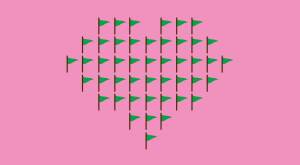I laughed it off when my daughter said for the umpteenth time, “Ma, you think too much.” She was laughing, but she was serious. I was laughing, but I couldn’t ignore it.
For days, my brain was constantly planning – planning for the next week of work, the next week of meals, and the next vacation. All my smartphone apps that promised more productivity made it worse. The endless barrage of notifications and reminders I’d set made everything feel more urgent than it was. I felt like I was running out of time and had to go faster to get things done. So, I got up earlier, multitasked all day, and stayed up later. But burning the candle on both ends and in the middle wasn’t working. I needed a technology timeout.
According to David Sax, author of The Revenge of Analog and The Future is Analog, that makes perfect sense. He believes the more we move toward relying on technology in every part of our lives, the more we look for non-tech ways to balance it out.
I turned off my phone, grabbed my favorite pink journal and green pen, and did a brain dump onto the pages. An immediate sense of calm came over me. The physical act of slow writing instead of fast typing gave me a sense of control over my racing thoughts, information overload, digital exhaustion, and middle-aged forgetfulness.
Technology timeouts for short breaks and longer digital detoxes have many benefits. You’ll gain sharper focus, better concentration, less stress, and you may even sleep better at night. Better sleep improves your moods and, therefore, may improve your relationships.
When I finished writing down my to-do list, grocery list, and getaway wish list, I felt much more balanced and capable instead of overwhelmed and ineffective.
It’s not just my imagination, either. Technology timeouts for short breaks and longer digital detoxes have many benefits. You’ll gain sharper focus, better concentration, less stress, and you may even sleep better at night. Better sleep improves your moods and, therefore, may improve your relationships.
Technology breaks also help you slow down and engage more fully in the world around you.
Gretchen Rubin’s book, Life in Five Senses: How Exploring the Senses Got Me Out of My Head and Into the World, made me realize I can’t use all my senses to experience the big world around me if I stay zoomed in on the tiny phone in my hand.
In a short version of her experiments, I took a ‘field trip’ to the mall to focus on the world around me intentionally. The unhurried drive with the windows down and the radio volume up put me in the type of feel-good mood I hadn’t felt for a while. Strolling through the mall, smelling the food, hearing the overhead music, and people-watching took me back to an old school chill that could never come from online shopping. Admittedly, I still spent my money online, but I gained more value from paying attention to my surroundings.
I could focus my attention where I wanted it to be rather than giving in to what Jenny Odell describes as the addictive technology designed to rob us of our attention.
In her book, How to Do Nothing: Resisting the Attention Economy, Odell urges us to internalize the idea that we’re not on this earth to be productive; we should contribute to the things that matter to us and care for the things we already have so they don’t degrade. I started with me first.
Here’s my to-do list for slowing down
I grabbed my journal and pen again and jotted down ideas before I could overthink them. Here’s my to-do list for slowing down to recalibrate and make more space for the simple pleasures in life.
- Create a vision board of what a new slowed-down life will look like instead of scrolling through social media and being a spectator in other people’s lives.
- Create meditative moments throughout the day. Even cooking popcorn on the stove can become a quick meditation. Take a deep breath and focus on the sounds of the kernels as they hit the bottom of the pot, popping faster and faster, then slower and slower, and transforming into, fluffy white balls that peek out from under the lid. Breathe in deeply again, basking in the smell. Indulge in the bonus of a whole-grain snack.
- Use slow cookers to carve out free time for self-care, family fun, and sitting on the front porch.
- Be a better human. Slow down and notice other people and their situations. Be compassionate. Be kind. Be grateful.
- Learn something new. A hobby, skill, or language class can slow down your hectic routine, build new friendships, and create memories.
- Play real-life board games with people you know rather than virtual games with people you don’t know.
- Mail a few cards, handwritten in cursive, to friends and relatives. You’ll find joy in writing them, hear joy in their voices when they thank you, and feel joy in your heart for brightening someone’s day.











